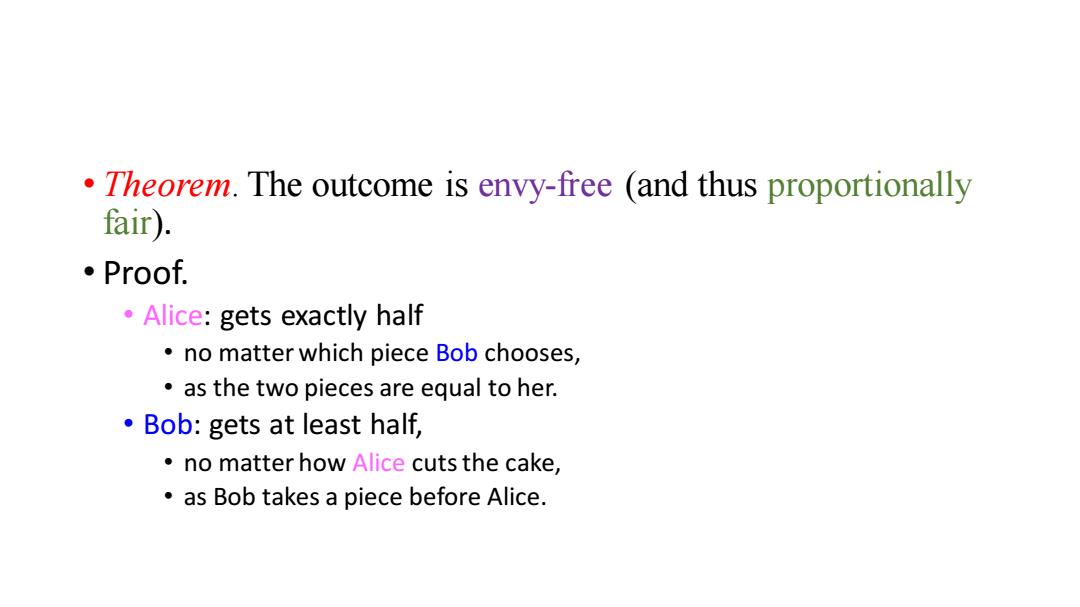
Theorem.The outcome is envy-free (and thus proportionally fair). ●Proof. Alice:gets exactly half no matter which piece Bob chooses, as the two pieces are equal to her. Bob:gets at least half, no matter how Alice cuts the cake, as Bob takes a piece before Alice
• Theorem. The outcome is envy-free (and thus proportionally fair). • Proof. • Alice: gets exactly half • no matter which piece Bob chooses, • as the two pieces are equal to her. • Bob: gets at least half, • no matter how Alice cuts the cake, • as Bob takes a piece before Alice
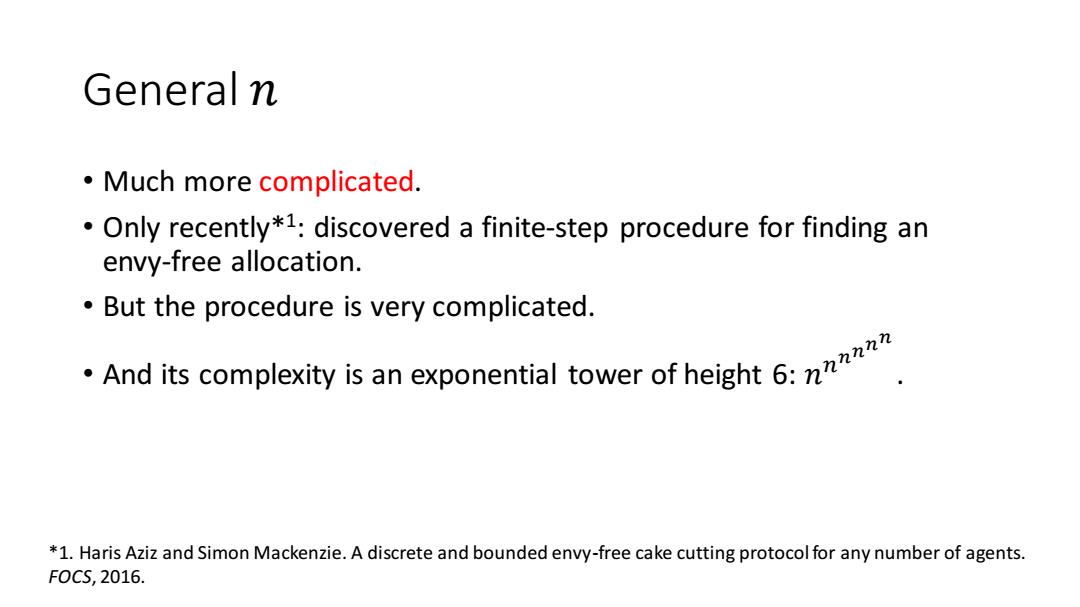
General n Much more complicated. Only recently*1:discovered a finite-step procedure for finding an envy-free allocation. But the procedure is very complicated. And its complexity is an exponential tower of height 6: *1.Haris Aziz and Simon Mackenzie.A discrete and bounded envy-free cake cutting protocol for any number of agents. F0CS,2016
General 𝑛 • Much more complicated. • Only recently*1 : discovered a finite-step procedure for finding an envy-free allocation. • But the procedure is very complicated. • And its complexity is an exponential tower of height 6: 𝑛 𝑛 𝑛 𝑛 𝑛 𝑛 . *1. Haris Aziz and Simon Mackenzie. A discrete and bounded envy-free cake cutting protocol for any number of agents. FOCS, 2016
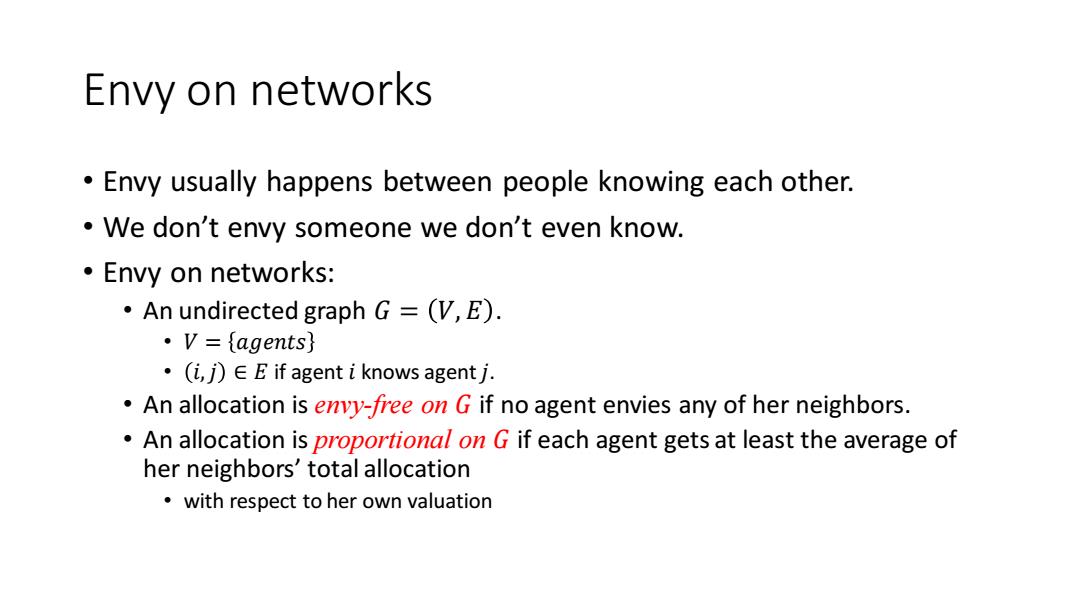
Envy on networks Envy usually happens between people knowing each other. We don't envy someone we don't even know. ·Envy on networks: An undirected graph G=(V,E). ·V={agents} ·(i,j)∈E if agent i knows agent j: An allocation is envy-free on G if no agent envies any of her neighbors. An allocation is proportional on G if each agent gets at least the average of her neighbors'total allocation with respect to her own valuation
Envy on networks • Envy usually happens between people knowing each other. • We don’t envy someone we don’t even know. • Envy on networks: • An undirected graph 𝐺 = 𝑉, 𝐸 . • 𝑉 = 𝑎𝑔𝑒𝑛𝑡𝑠 • 𝑖,𝑗 ∈ 𝐸 if agent 𝑖 knows agent 𝑗. • An allocation is envy-free on 𝐺 if no agent envies any of her neighbors. • An allocation is proportional on 𝐺 if each agent gets at least the average of her neighbors’ total allocation • with respect to her own valuation
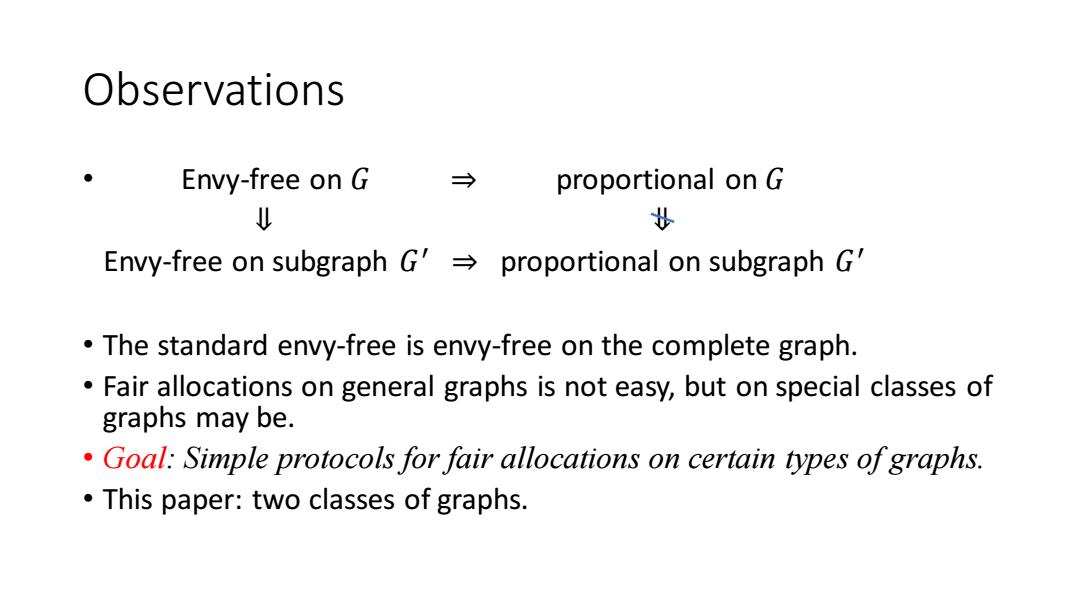
Observations Envy-free on G → proportional on G 业 业 Envy-free on subgraph G proportional on subgraph G' The standard envy-free is envy-free on the complete graph. Fair allocations on general graphs is not easy,but on special classes of graphs may be. Goal:Simple protocols for fair allocations on certain types ofgraphs. This paper:two classes of graphs
Observations • Envy-free on 𝐺 ⇒ proportional on 𝐺 ⇓ ⇓ Envy-free on subgraph 𝐺 ′ ⇒ proportional on subgraph 𝐺 ′ • The standard envy-free is envy-free on the complete graph. • Fair allocations on general graphs is not easy, but on special classes of graphs may be. • Goal: Simple protocols for fair allocations on certain types of graphs. • This paper: two classes of graphs
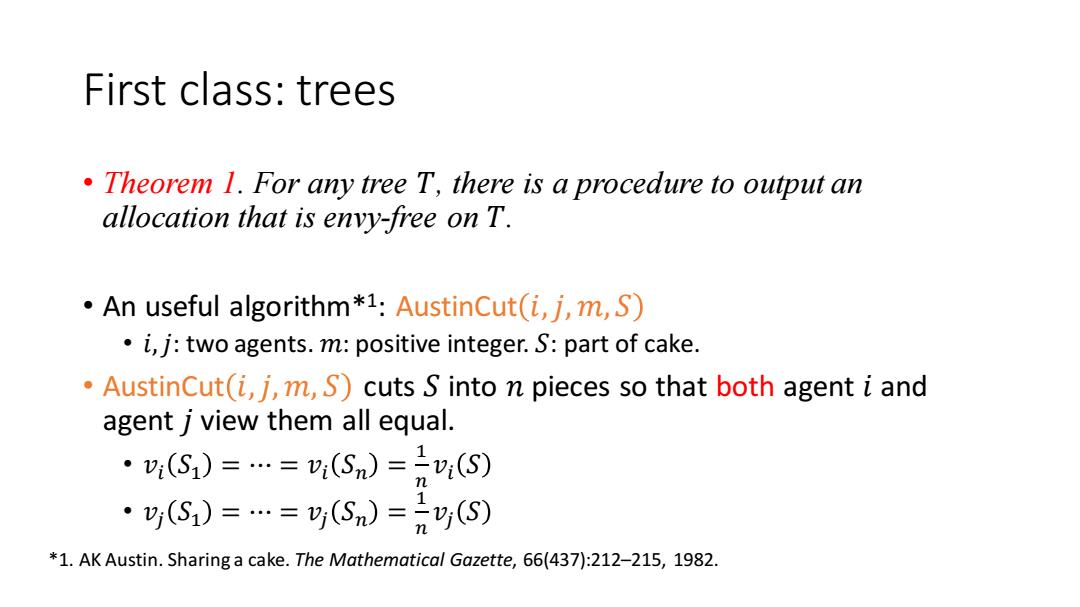
First class:trees Theorem 1.For any tree T,there is a procedure to output an allocation that is envy-free on T. An useful algorithm*1:AustinCut(i,j,m,S) i,j:two agents.m:positive integer.S:part of cake. AustinCut(i,j,m,S)cuts S into n pieces so that both agent i and agent j view them all equal. ·(S)==(Sn)=S) ·(S1)=…=(Sm)=(S) *1.AK Austin.Sharing a cake.The Mathematical Gazette,66(437):212-215,1982
First class: trees • Theorem 1. For any tree 𝑇, there is a procedure to output an allocation that is envy-free on 𝑇. • An useful algorithm*1 : AustinCut 𝑖,𝑗, 𝑚, 𝑆 • 𝑖,𝑗: two agents. 𝑚: positive integer. 𝑆: part of cake. • AustinCut 𝑖,𝑗, 𝑚, 𝑆 cuts 𝑆 into 𝑛 pieces so that both agent 𝑖 and agent 𝑗 view them all equal. • 𝑣𝑖 𝑆1 = ⋯ = 𝑣𝑖 𝑆𝑛 = 1 𝑛 𝑣𝑖 𝑆 • 𝑣𝑗 𝑆1 = ⋯ = 𝑣𝑗 𝑆𝑛 = 1 𝑛 𝑣𝑗 𝑆 *1. AK Austin. Sharing a cake. The Mathematical Gazette, 66(437):212–215, 1982